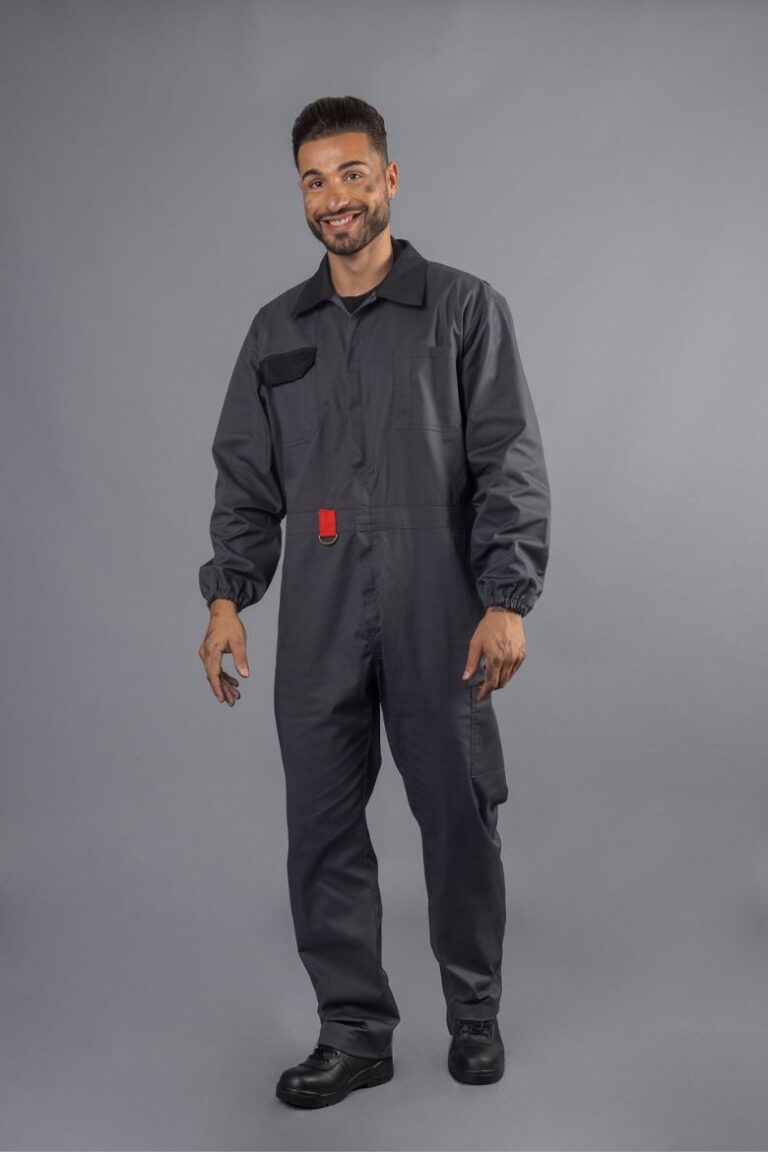
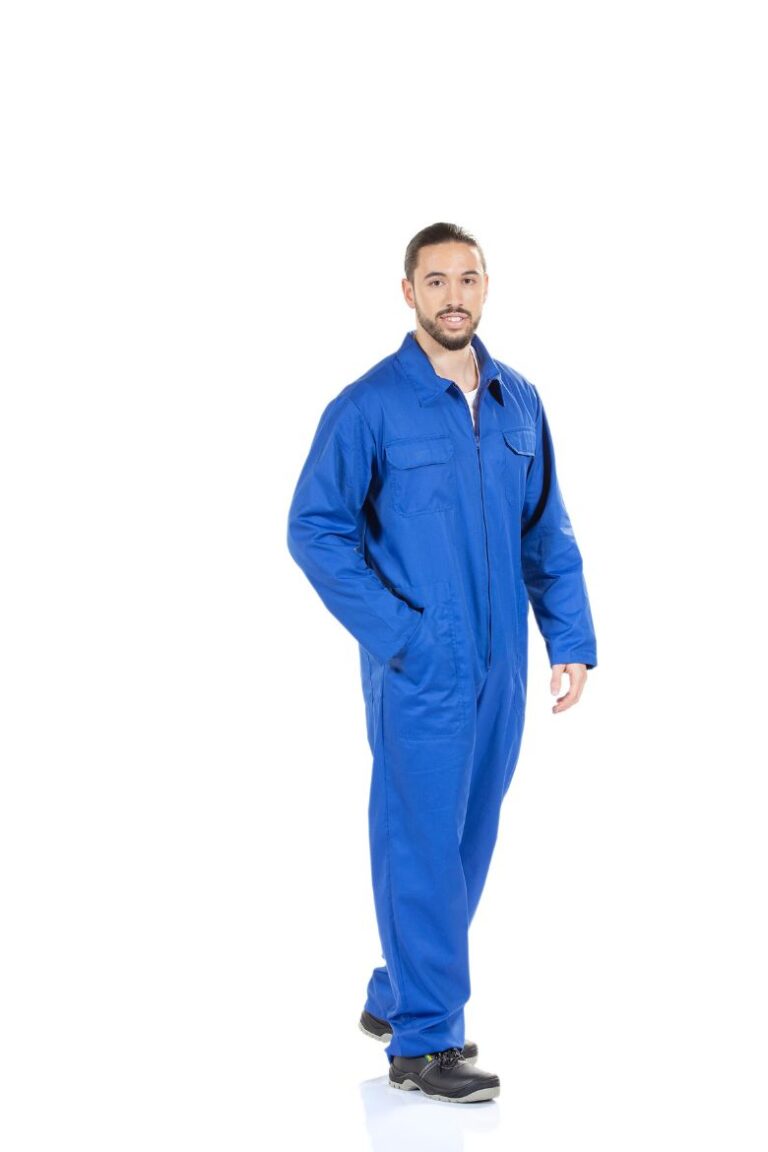
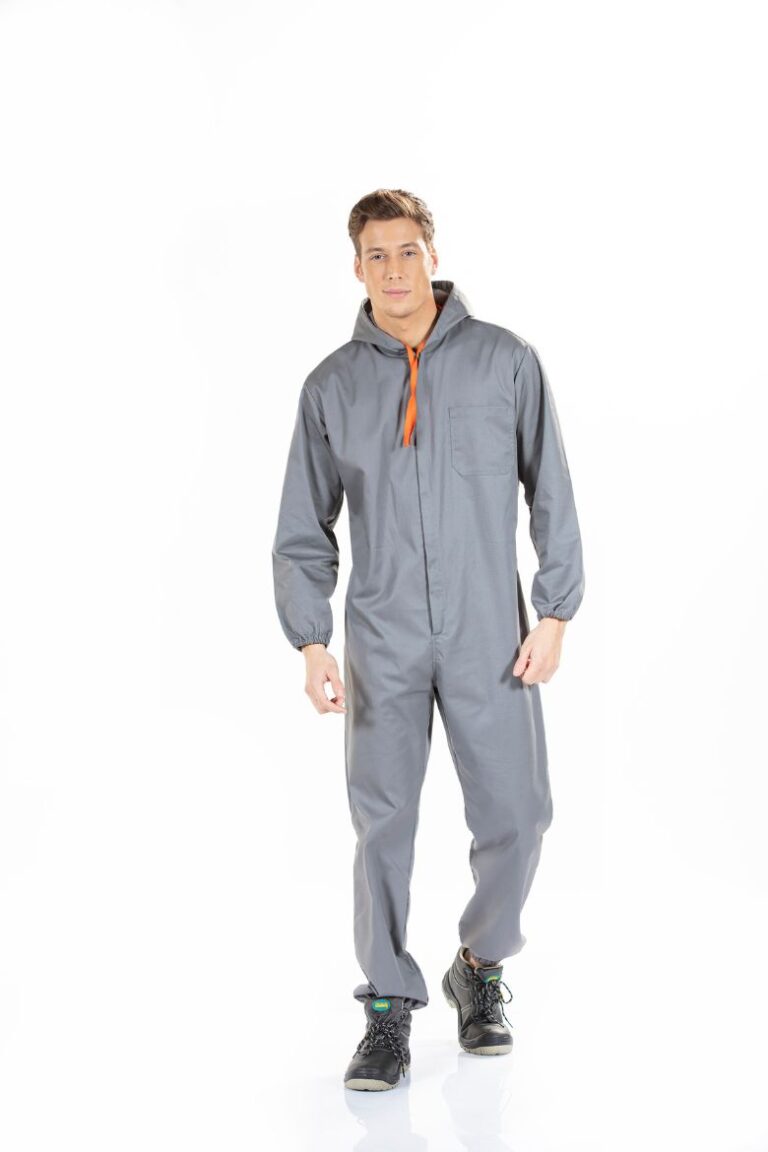
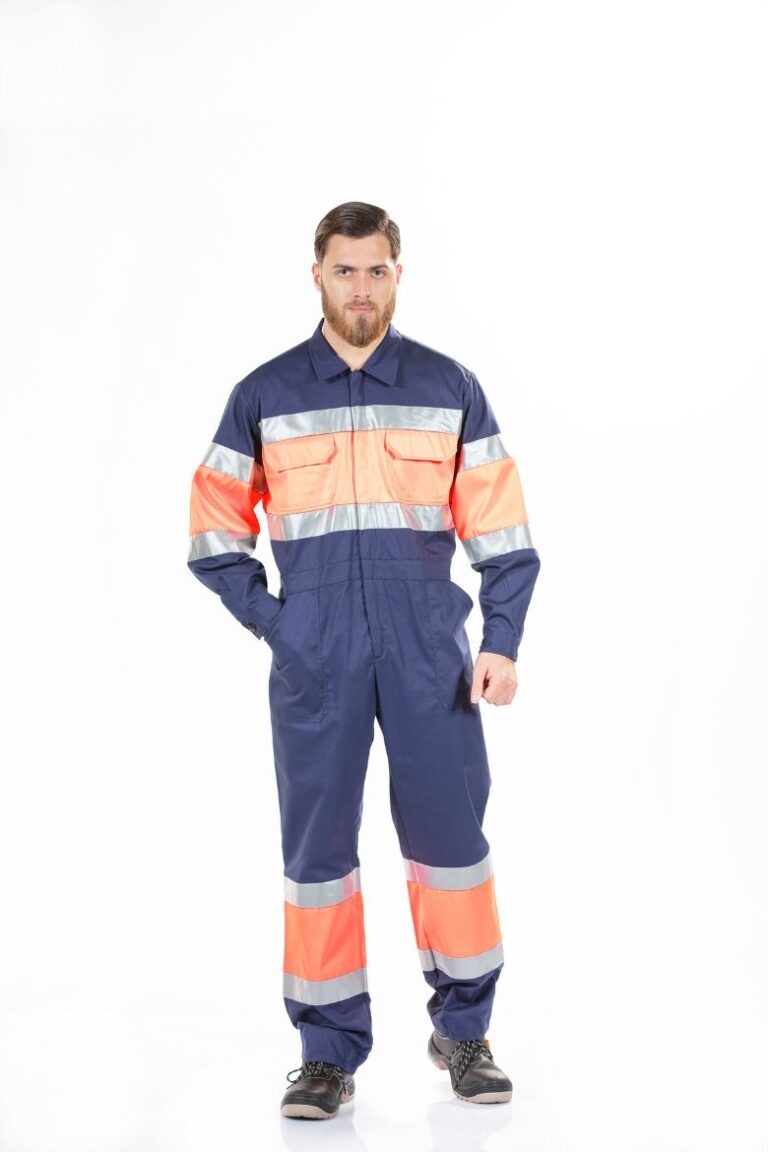
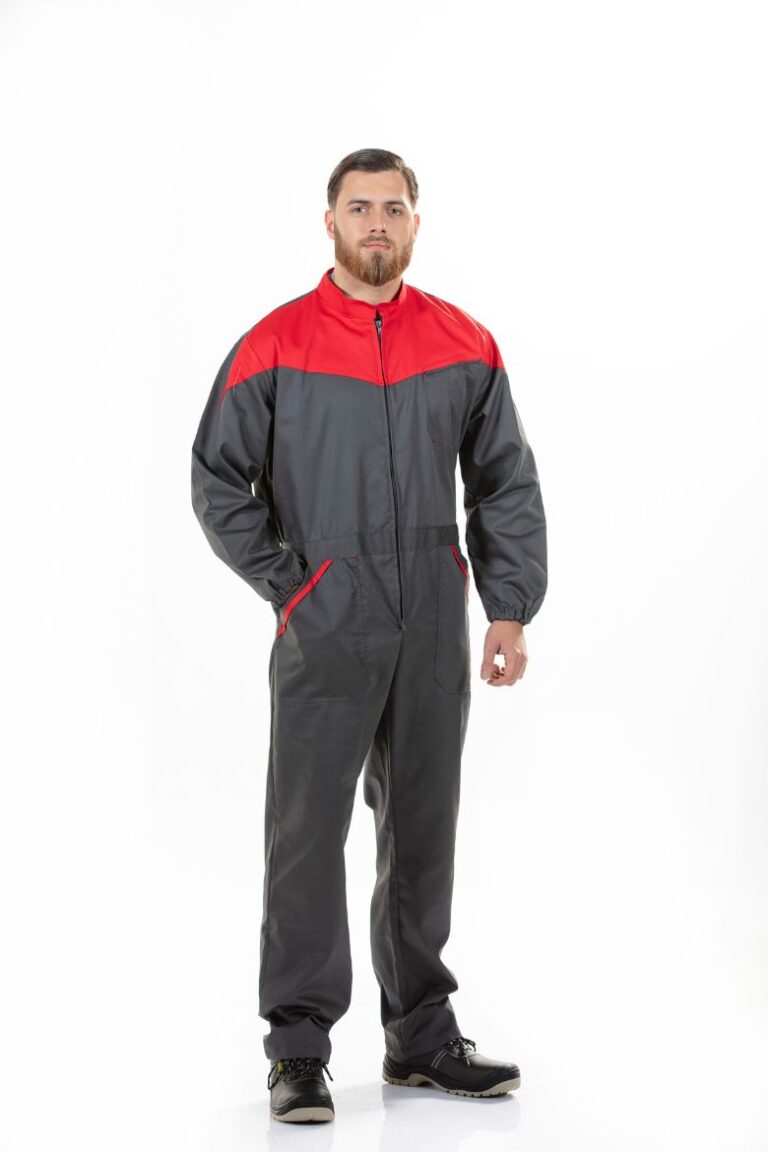
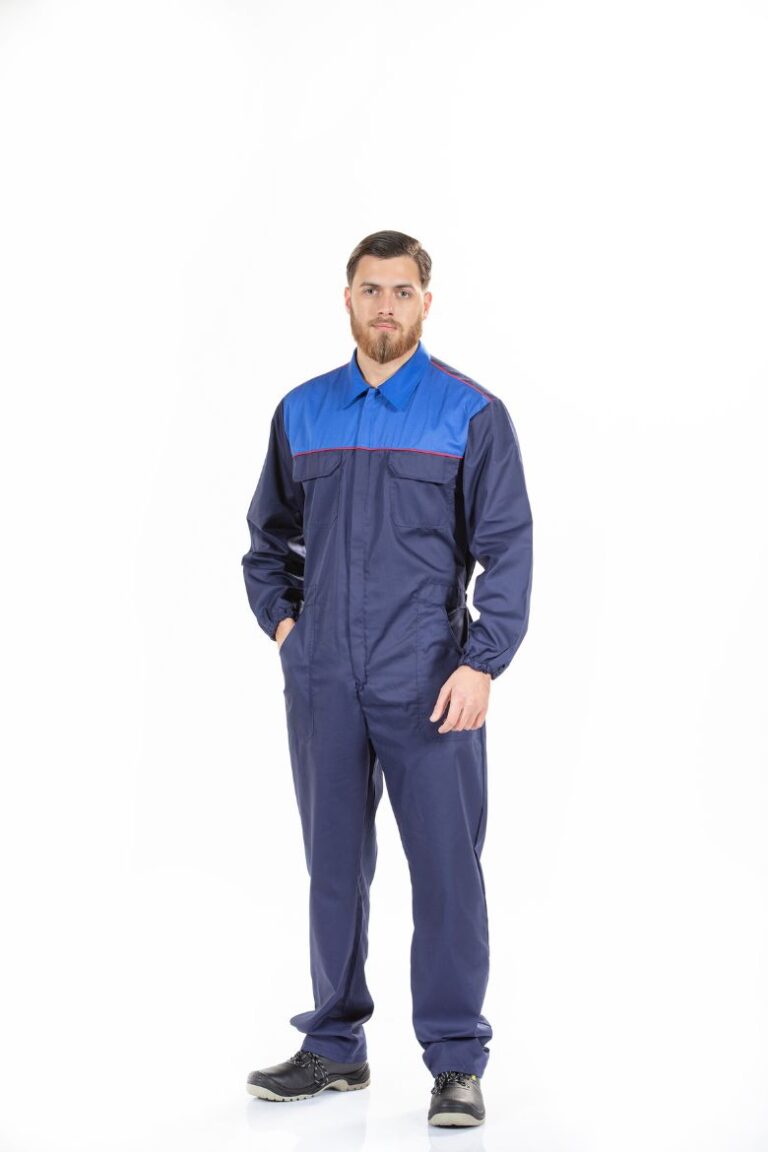
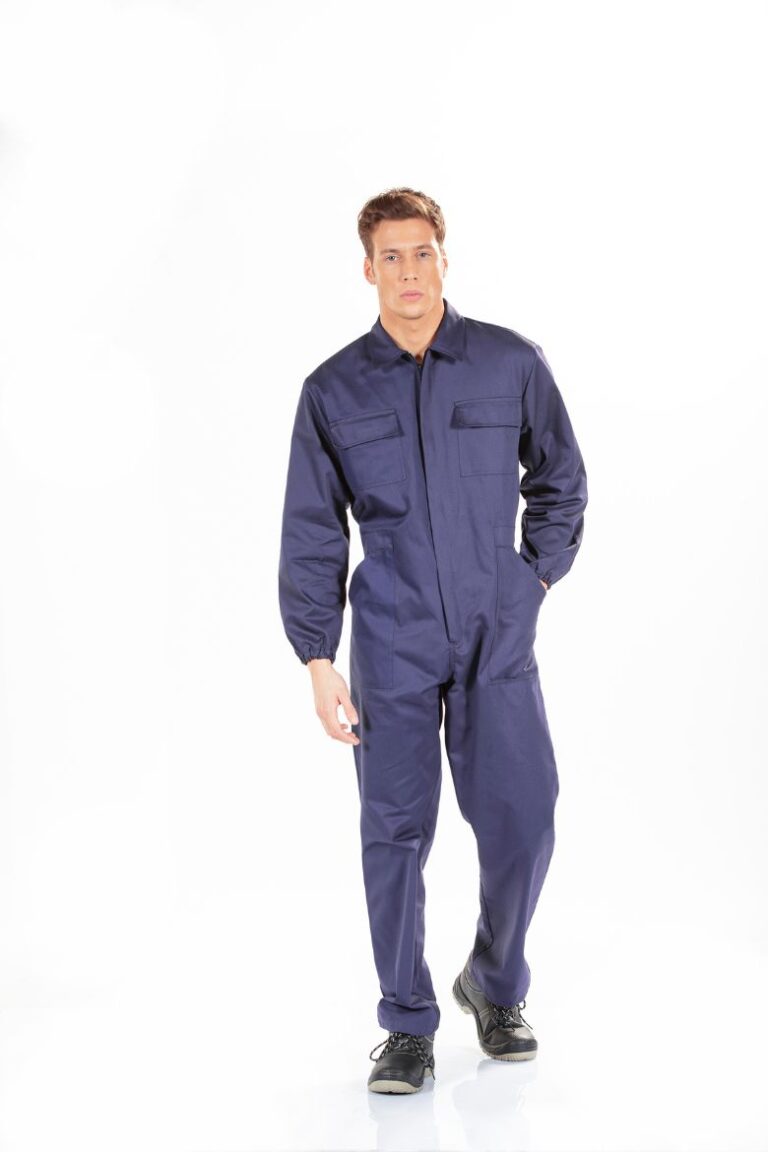
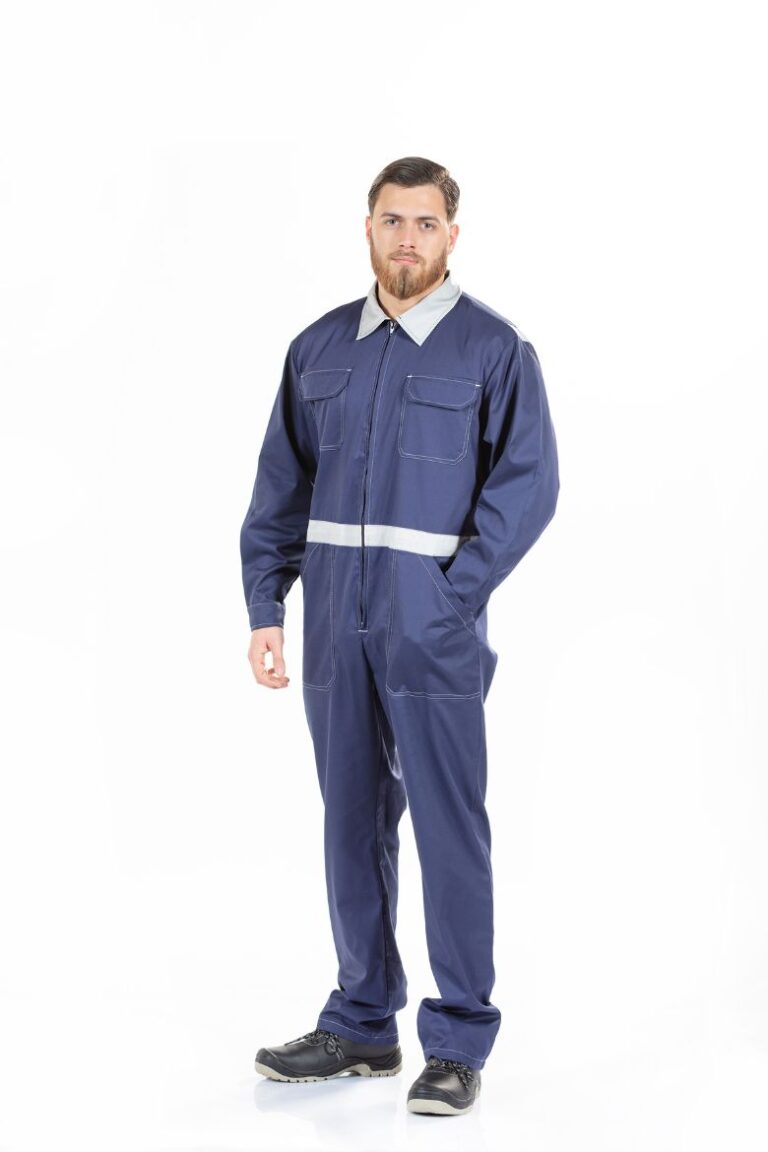
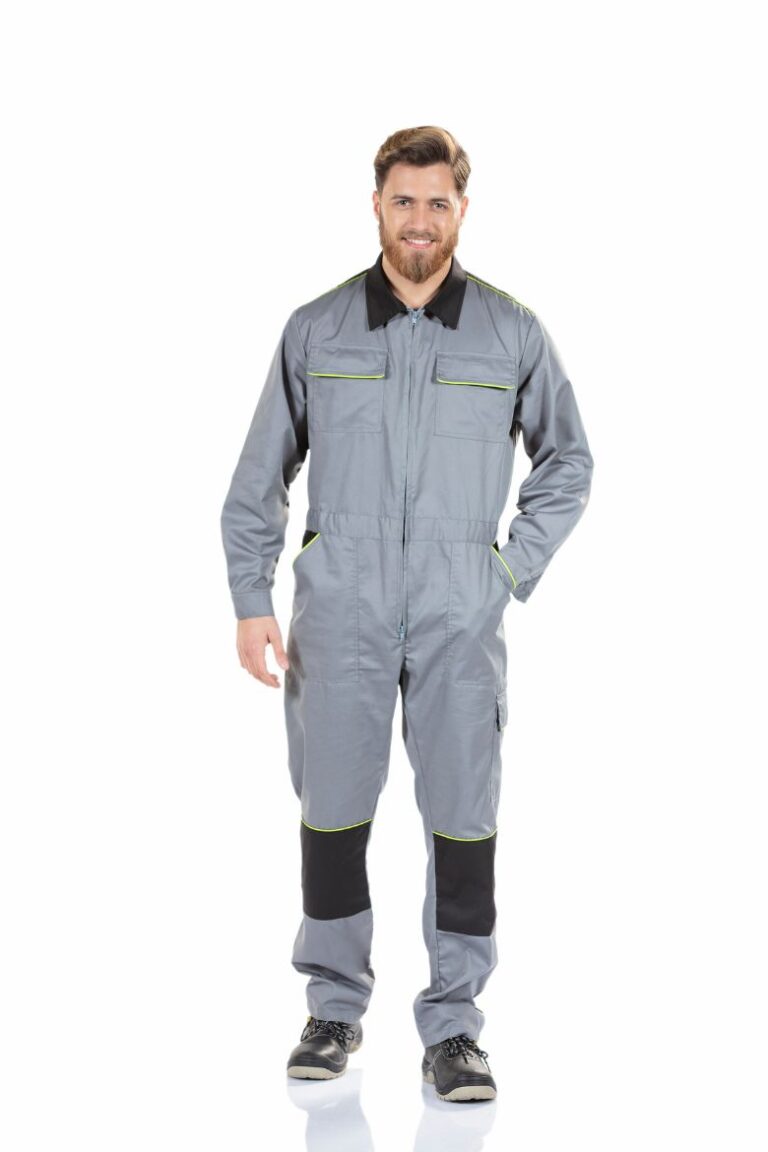
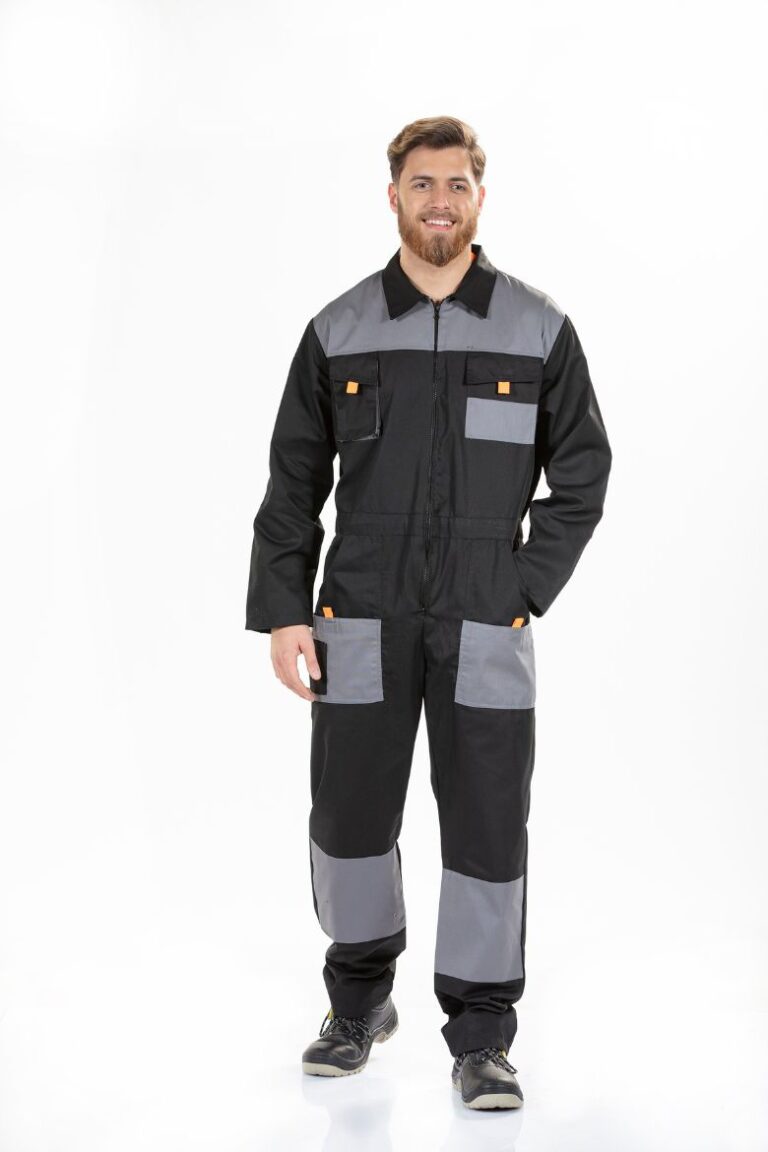
Products with visible prices are those that can be purchased immediately, online, without requiring minimum purchase quantities. This means you can explore our variety of options and purchase exactly what you need, with complete transparency regarding costs and the Professional Apparel model. On the other hand, products without a listed price function as a portfolio of possibilities. These items are highly customizable and can be tailored to each customer's individual specifications. To ensure quality and meet expectations, these products have a minimum order quantity and are subject to a custom quote process.
Flame-resistant coveralls—often abbreviated as FR clothing—refer to any garments specifically designed and manufactured to protect users from potential flash fires and thermal exposure. To further elaborate on this definition, we can examine the specific ways in which FR clothing protects the wearer from flame-related injuries. These garments do not easily catch fire. This capability significantly reduces the risk of burns to the wearer and often provides valuable time to escape an unsafe environment. These attributes work together to provide a much higher chance of escape and survival if the wearer suddenly finds themselves in the midst of a fire, an electrical arc, or some other unexpected thermal hazard that could cause injury. In such situations, wearing flame-retardant coveralls can be the difference between being severely injured or escaping unharmed. The purpose of flame-retardant coveralls is to protect the wearer in an emergency where their clothing could catch fire. Many people work in industries involving fire risk, such as metalworking. Although the rate of fires occurring in these fields may be low, it is crucial to have emergency plans in place. Specifically, flame-retardant coveralls and clothing use non-conductive fabrics and components that do not melt onto the skin, keeping burn injuries to a minimum. Coveralls, overalls, work jackets, and pants made with flame-retardant fabric can provide the necessary thermal insulation to protect the wearer from extreme heat.
There are different types of coveralls that offer varying levels of protection. Generally, coveralls are an excellent way to provide an extra layer of protection without compromising the wearer's mobility. Typically, there are six types of coveralls. These are the basic coverall, flame-resistant coverall, waterproof coverall, disposable coverall, high-visibility coverall, and electric-resistant coverall. Each type has its own functions and specific uses. • Standard Protective Coverall This is the basic type of protective coverall. This professional garment provides a basic protective layer designed to withstand a variety of hazards, such as pollution, dirt, water splashes, and stains. • Flame-Retardant Coverall These coveralls help protect users from potential burns as well as from some chemicals that might come into contact with their clothing. Although this type of clothing is not completely fireproof, it can allow a worker to escape unharmed in the event of an accident. • Waterproof Coverall These coveralls help protect against excessive moisture or high levels of water, keeping the worker dry. This type of coverall is an excellent way to stay dry while working in the wettest conditions. Unlike flame-retardant coveralls, this type of clothing can be more easily used in medical areas. • Disposable (Single-Use) Coverall One of the most commonly used coveralls is the disposable coverall. Since it is... Intended for single use, there will be hardly any harmful bacteria or germs inside. This is one of the most affordable options and thus is widely used. Electric-Resistant Coverall This is a type of workwear used by workers who need to climb poles or be near electrical networks. These coveralls provide an additional layer of protection and safety in one of the most dangerous professions. High-Visibility Coverall The use of high-visibility coveralls reduces the risk of accidents and fatalities in environments where there is, for example, heavy vehicle traffic—such as in construction areas and industrial facilities. In such locations, high-visibility workwear is required by occupational health and safety regulations. The same applies in warehouses, where forklifts often move silently. In these types of environments, wearing high-visibility coveralls or other types of high-visibility clothing is advised.
Certain jobs and industries mandate the use of coveralls to ensure worker safety. Coveralls are specially designed garments that protect the wearer from workplace hazards and environmental risks. Industries such as construction, industrial maintenance, oil and gas, and cleaning services rely heavily on men’s coveralls to provide effective protection and durability.
There are numerous types of work coveralls available, each tailored to the specific demands of various professions. Common features include:
Modern men’s coveralls incorporate innovative safety features to handle emergency situations, such as:
These enhancements make coveralls indispensable in high-risk industries.
A coverall covers the upper and lower body, serving as both pants and a shirt in one piece. This design protects both the wearer and the clothing underneath, shielding against dirt, stains, and damage. Mechanics, for instance, find coveralls invaluable when working with oils and greases.
Being a single-piece garment, men’s coveralls retain body heat effectively, offering comfort in colder environments.
The fabric used in work coveralls plays a crucial role in their performance:
To ensure optimal protection and performance, always select work coveralls that match the specific job requirements. Regular inspections and adherence to the manufacturer’s guidelines are essential for safety and longevity.
Men’s coveralls are indispensable safety garments, combining protection, functionality, and durability. From construction sites to maintenance tasks, these work uniforms are designed to meet the challenges of demanding industries. By choosing the right coveralls, workers can enhance their safety, comfort, and efficiency on the job.
Fardamento à sua medida.
Descubra as nossas
soluções.
Fardamento à sua medida.
Descubra as nossas
soluções.
To subscribe, please enter your e-mail address and click on “Subscribe”.
You can stop receiving our communications by clicking on the link in the footer of any of our newsletters.
Para efetuar a sua subscrição, por favor insira o seu e-mail e clique em “Subscrever”.
Poderá parar de receber as nossas comunicações, ao clicar no link para o efeito encontrado nos rodapés de qualquer uma das nossas Newsletters.
UNIFARDAS® supports Espaço T, which is an inclusive organisation, of all and for all, and our common goal is to increase employment opportunities for young people with special needs and/or who, for some reason, have been excluded from the labour market.
We work hard to provide safe working conditions by going beyond the imposed and mandatory minimums.
We support, nurture and offer continuous training programmes aimed at improving skills.
At UNIFARDAS® we keep up to date with the latest technologies and innovations that can optimise our production process making it more efficient and close to zero waste.
UNIFARDAS® is a partner of Espaço T, an inclusive organisation, of all and for all, with the common goal of increasing employment opportunities for young people with special needs and/or who, for some reason, have been excluded from the labour market. In this organisation, immigrants will also find a support network in finding work and housing.
In addition to the sustainable path we have been taking throughout our production and supply chain, UNIFARDAS® participates, supports and organises a beach clean-up every year after the bathing season, in partnership with World Clean-up Day. We are also partners of Seaqual, an entity that, together with some other partners, promotes the collection of ocean waste and its transformation into upcycled marine plastic that will then be used in the production of fabric and other sustainable products.
In addition to the sustainable path we have been taking throughout our production and supply chain, UNIFARDAS® participates, supports and organises a beach clean-up every year after the bathing season, in partnership with World Clean-up Day. We are also partners of Seaqual, an entity that, together with some other partners, promotes the collection of ocean waste and its transformation into upcycled marine plastic that will then be used in the production of fabric and other sustainable products.